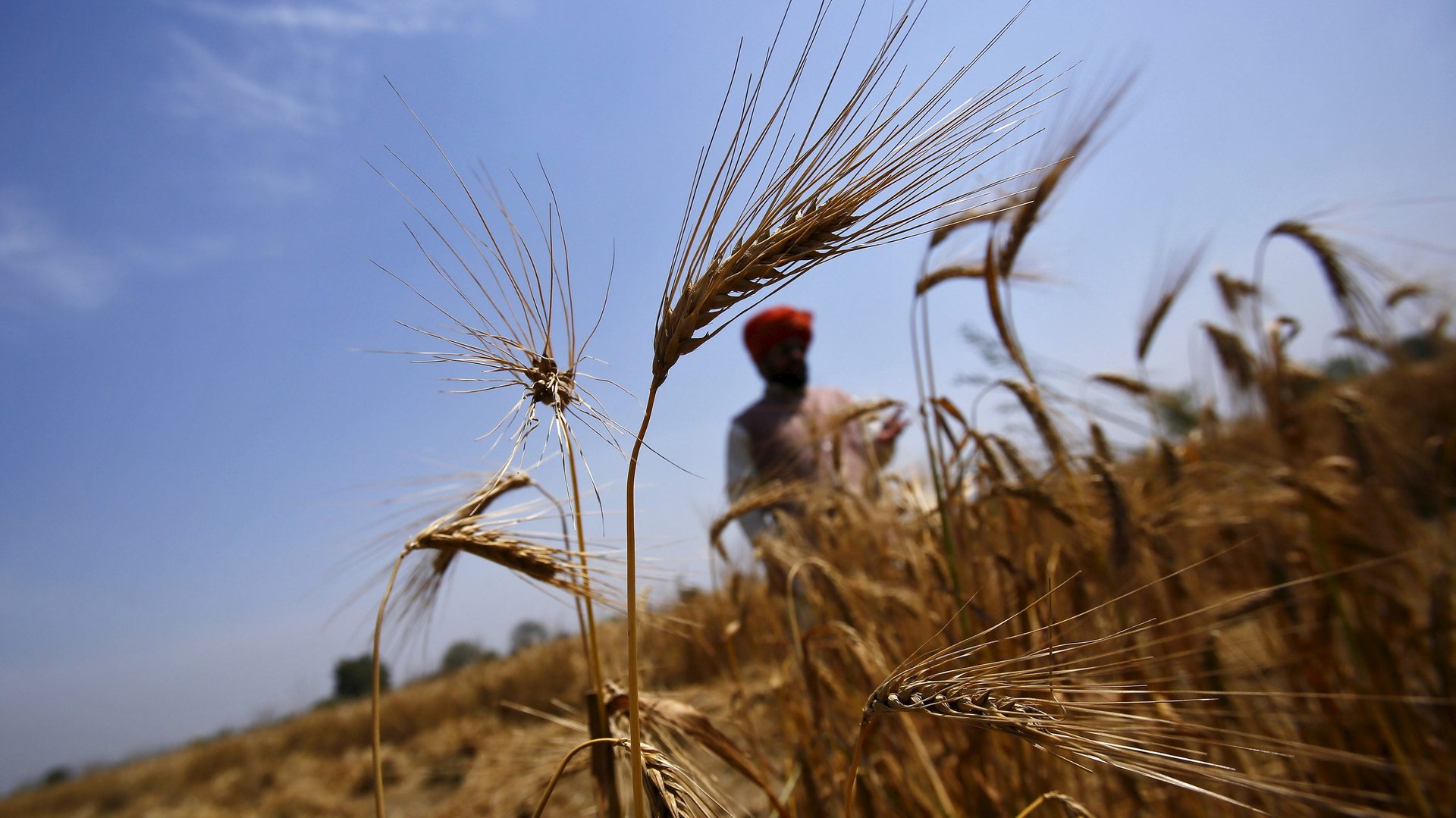The Russia-Ukraine war could spur India’s best wheat export season yet
Russia’s invasion of Ukraine could make India a prominent wheat exporter on the world stage.


Russia’s invasion of Ukraine could make India a prominent wheat exporter on the world stage.
The two Black Sea belt nations at war have been major suppliers of the commodity, accounting for nearly 30% of the global supply. However, since the full-scale war was launched on Feb. 22, Ukranian ports have halted commercial activity, and Russia’s wheat exports have come to a standstill.
Given the uncertainty, demand could shift to India, according to Nitin Gupta, vice-president at Olam Agro India. The country is on track to export a record 7 million tonnes this year.
The price (of wheat) is right
India is the second-largest producer of wheat in the world but only accounts for 1% of exports. A majority of its harvest has typically been used domestically.
Following a few years of bumper crops, courtesy high-yielding seed varieties, efficient farm mechanisation, and favourable weather conditions, India has amassed surplus wheat stocks to plug the void left by Russia and Ukraine. There are more than 100 million tonnes of the staple in its granaries, now filled to the brim.
Choked supplies have pushed wheat prices to a 14-year-high, surpassing $11 a bushel, making exports lucrative.
At the Kandla port in the western state of Gujarat, for instance, exporters were willing to pay up to Rs2,450 ($31.84) per quintal versus Rs2,000 ($26) per quintal a week ago.
“Also, wheat availability in the world market anyway remains limited until April-May, and India can easily tap this opportunity,” he said. India’s crop will start hitting the markets by March 15.
Who’s buying Indian wheat?
Asian countries such as the Philippines, Bangladesh, South Korea, Sri Lanka, and the UAE are among the main buyers of Indian wheat. Others—Lebanon, for one—are also turning to India.
“Escalation in tension means this is now an issue about food security and countries will look out for wheat imports,” said Biswajit Dhar, an economics professor at JNU, told daily the Mint.
“The way the situation is panning out, the net food-importing countries will be pushed to the wall. For them importing from wherever it is available will be a priority. India is a large wheat exporter and hence will find itself at an advantageous position.”
What’s stopping India from becoming a major wheat exporter?
Having enough stockpiles is not enough. India lacks a long-term policy that allows for its smooth overseas sales, Madan Sabnavis, chief economist at Bank of Baroda, told daily newspaper Mint.
Traders and commissioning agents in some parts of the country are desperate for tax reliefs to cash in on the opportunity.
For instance, in Punjab, sellers have been fielding enquiries from food retail giants and foodgrain exporters like ITC, Cargill, Adani Group, and the Australian Wheat Board. While demand is ballooning, high taxes—3% each market fee and rural development fund, 2.5% commission to agents and 1% service charges—could play spoilsport.